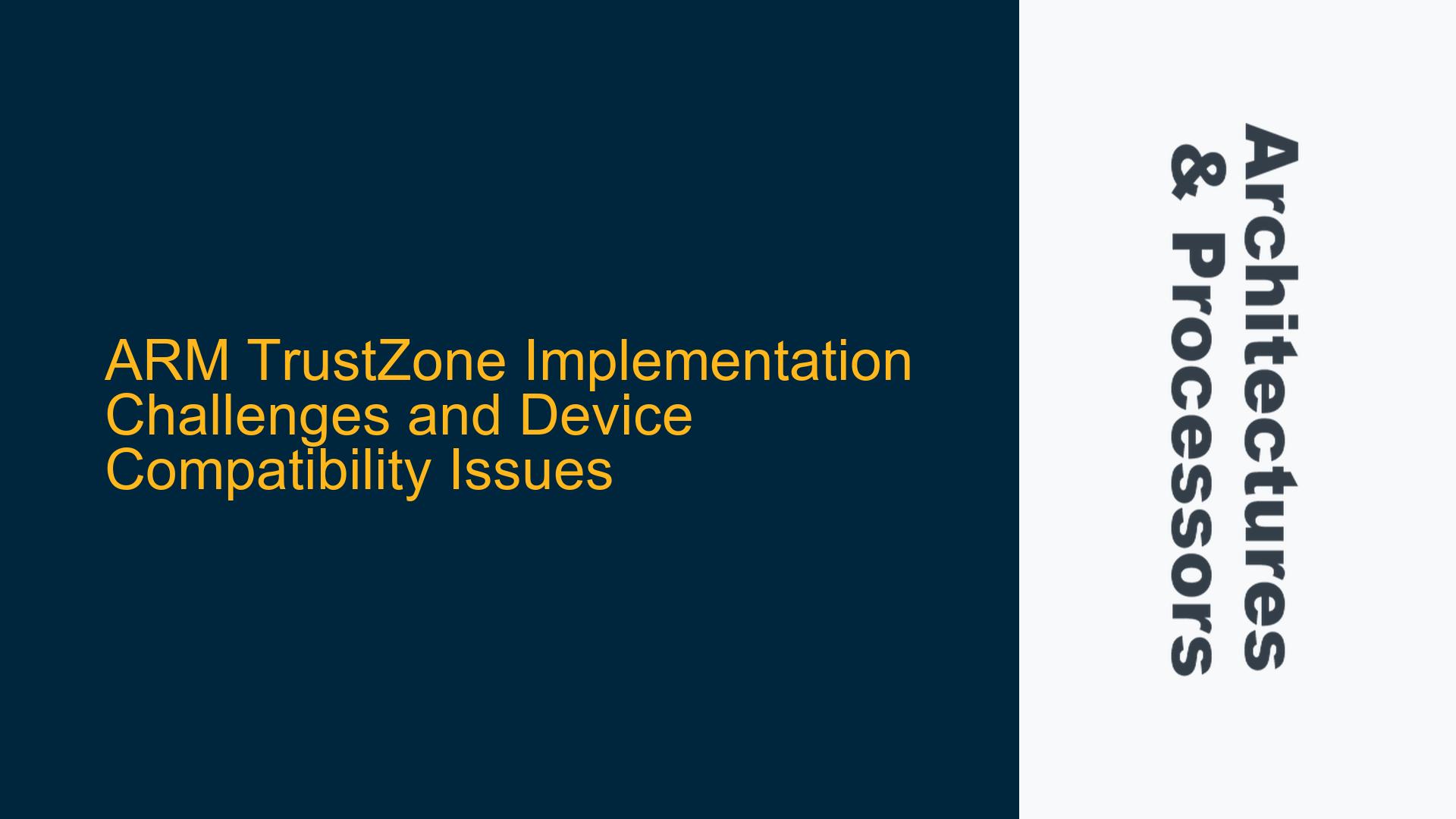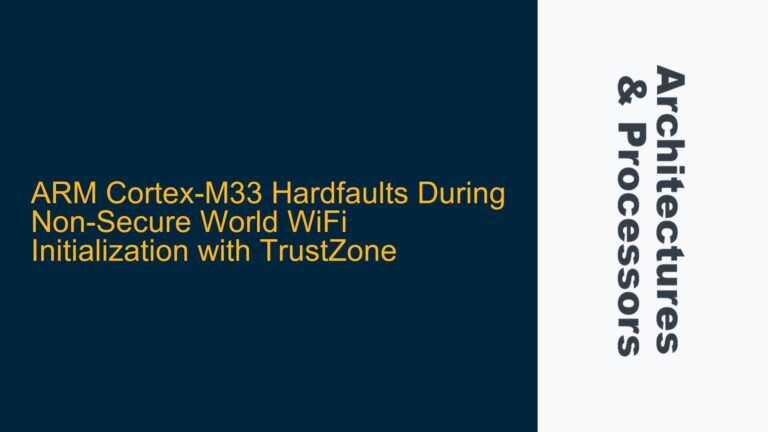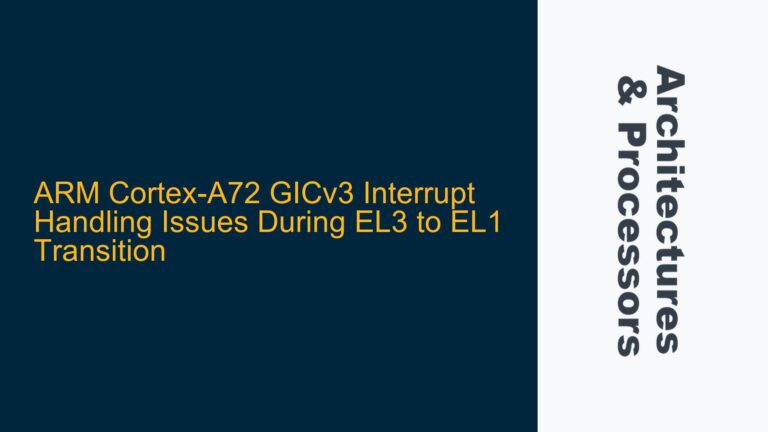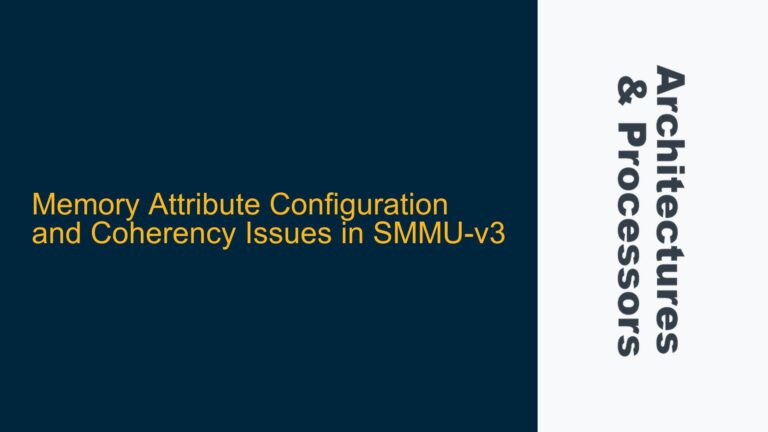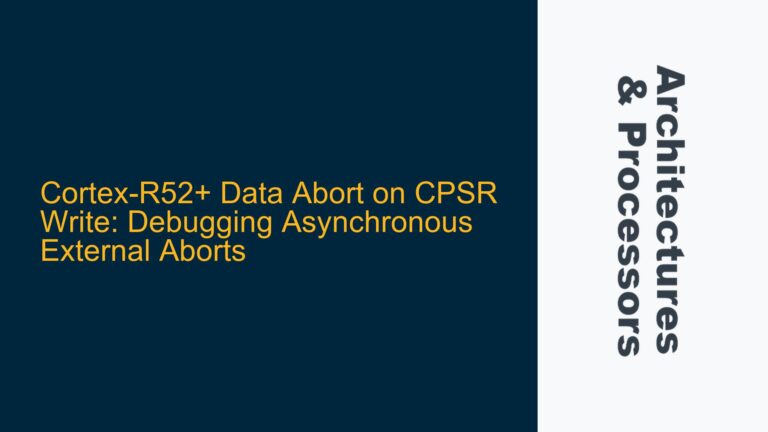ARM TrustZone Isolation and Secure Boot Limitations in Raspberry Pi
ARM TrustZone is a hardware-based security feature embedded in ARM processors, designed to create isolated execution environments for secure and non-secure worlds. This isolation ensures that sensitive operations, such as cryptographic key management or secure boot processes, are protected from potential attacks. However, not all devices that include ARM processors with TrustZone capabilities fully implement or expose these features to developers. A common example is the Raspberry Pi, which incorporates an ARM Cortex-A series processor with TrustZone support but does not enable secure boot or provide accessible TrustZone features out of the box. This limitation stems from the Raspberry Pi’s design philosophy, which prioritizes accessibility and cost-effectiveness over advanced security features. As a result, developers seeking to experiment with or implement TrustZone-based security mechanisms may find the Raspberry Pi unsuitable for their needs.
The absence of secure boot on the Raspberry Pi means that the device cannot verify the integrity of the bootloader or operating system during startup, leaving it vulnerable to tampering. Secure boot is a critical component of TrustZone’s security model, as it establishes a root of trust from the moment the device powers on. Without this feature, the secure world’s isolation becomes less effective, as attackers could potentially compromise the system before TrustZone even initializes. Furthermore, the Raspberry Pi’s firmware and bootloader do not provide the necessary hooks or APIs for developers to interact with TrustZone directly. This lack of developer-facing tools makes it difficult to implement custom secure applications or leverage TrustZone’s capabilities for IoT security, secure storage, or trusted execution environments.
For developers looking to work with ARM TrustZone, it is essential to understand the distinction between devices that include TrustZone hardware and those that fully implement its features. While the Raspberry Pi serves as an excellent platform for general-purpose computing and prototyping, it falls short in providing the necessary infrastructure for advanced security applications. This gap highlights the importance of selecting the right hardware for projects that require robust security features, as not all ARM-based devices are created equal in terms of TrustZone implementation.
Incomplete TrustZone Enablement and Lack of Developer Resources
The challenges associated with ARM TrustZone implementation extend beyond the Raspberry Pi and are often rooted in incomplete enablement or insufficient developer resources. Many ARM-based devices, particularly those targeting cost-sensitive markets, may include TrustZone hardware but fail to provide the software support needed to utilize it effectively. This disconnect between hardware capabilities and software enablement can create significant barriers for developers seeking to integrate TrustZone into their projects.
One common issue is the lack of documentation or reference implementations for TrustZone on specific devices. While ARM provides comprehensive technical documentation for TrustZone, this information is often generic and does not address the nuances of individual SoCs or development boards. Without device-specific guidance, developers may struggle to configure TrustZone, set up secure and non-secure worlds, or implement secure boot processes. This gap in documentation is particularly problematic for hobbyists and small teams, who may not have the resources to reverse-engineer or experiment with low-level firmware.
Another challenge is the absence of pre-configured TrustZone environments or development kits. Many ARM-based development boards do not come with TrustZone-enabled firmware or secure bootloaders, requiring developers to build these components from scratch. This process can be time-consuming and error-prone, especially for those new to ARM architecture or embedded systems. Additionally, the lack of standardized tools for TrustZone development complicates the workflow, as developers must often rely on custom scripts or proprietary software to configure and debug their systems.
The incomplete enablement of TrustZone on many devices also raises questions about the broader ecosystem’s readiness to support advanced security features. While ARM has made significant strides in promoting TrustZone as a foundational technology for IoT and embedded security, the reality is that many device manufacturers have yet to fully embrace its potential. This lag in adoption can be attributed to various factors, including cost considerations, market priorities, and the complexity of implementing TrustZone in production environments. As a result, developers must carefully evaluate the capabilities and limitations of their chosen hardware before committing to a TrustZone-based solution.
Selecting ARM TrustZone-Compatible Devices and Development Strategies
To overcome the challenges associated with ARM TrustZone implementation, developers must adopt a strategic approach to device selection and development. The first step is to identify devices that not only include TrustZone hardware but also provide the necessary software support and developer resources. This requires thorough research into the specifications and documentation of potential hardware platforms, as well as an understanding of the specific security requirements for the project.
One option is to use development boards specifically designed for TrustZone experimentation and prototyping. These boards often come with pre-configured firmware, secure bootloaders, and comprehensive documentation, making it easier for developers to get started with TrustZone. Examples of such boards include the NXP i.MX RT series, which features Cortex-M processors with TrustZone support, and the STM32MP1 series from STMicroelectronics, which combines Cortex-A and Cortex-M cores with advanced security features. These platforms are well-suited for IoT applications, secure boot implementations, and trusted execution environments.
Another consideration is the availability of development tools and software libraries that simplify TrustZone integration. ARM’s Trusted Firmware-M (TF-M) is an open-source reference implementation of PSA Certified guidelines, providing a secure foundation for IoT devices. TF-M includes modules for secure boot, secure storage, and cryptographic operations, enabling developers to build secure applications without starting from scratch. Additionally, ARM’s Development Studio and Keil MDK offer integrated development environments (IDEs) with TrustZone support, streamlining the process of configuring and debugging secure systems.
When selecting a device, developers should also evaluate the manufacturer’s commitment to security and ongoing support. Devices from reputable manufacturers with a strong focus on security are more likely to receive regular firmware updates, security patches, and technical support. This is particularly important for production environments, where vulnerabilities or bugs in the TrustZone implementation could have serious consequences.
Finally, developers should consider the long-term viability of their chosen platform. As ARM continues to evolve its TrustZone technology, it is essential to select devices that are likely to receive future updates and support. This includes evaluating the manufacturer’s roadmap, community engagement, and compatibility with emerging security standards. By taking a proactive approach to device selection and development, developers can maximize the benefits of ARM TrustZone and build secure, reliable systems that meet the demands of modern embedded applications.
